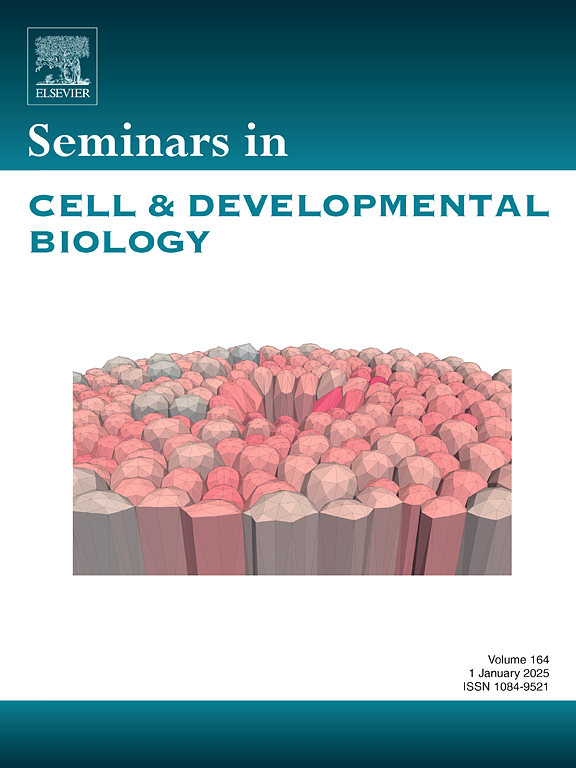开发过程中的粘弹性:什么是粘弹性?你为什么要在意呢?
IF 6
2区 生物学
Q1 CELL BIOLOGY
引用次数: 0
摘要
粘弹性是生物组织的基本特征,在细胞和组织中起着至关重要的作用。本文综述了粘弹性在力学生物学中的作用,重点介绍了粘弹性在胚胎发育过程中对形态发生和器官发生的影响。我们讨论细胞和组织的粘弹性行为及其在细胞和组织如何吸收、消散和传递机械能中的作用。我们总结了实验技术,如原子力显微镜(AFM),微吸管抽吸(MA)和组织拉伸器,已用于量化或观察粘弹性的影响。粘弹性的数学模型,如标准线性固体(SLS)模型和先进的分数模型被介绍和讨论,因为它们能够捕捉生物系统粘弹性行为的复杂性。亚细胞复合物的作用,包括细胞骨架、细胞外基质和细胞核,也回顾了它们对组织粘弹性行为的贡献。我们还识别和讨论知识差距,特别是在理解动态机械线索如何影响细胞和组织尺度上的粘弹性反应方面。我们需要对这些机制,特别是那些决定细胞和组织粘弹性行为的机制进行更深入的探索,以促进我们对胚胎发育和组织形态发生的理解。本文章由计算机程序翻译,如有差异,请以英文原文为准。
Viscoelasticity during development: What is it? and why should you care?
Viscoelasticity is a fundamental feature of biological tissues and plays a vital role in cells and tissues. This review explores the role of viscoelasticity in mechanobiology, emphasizing its impact on morphogenesis and organogenesis during embryonic development. We discuss the viscoelastic behavior of cells and tissues and its role in how cells and tissues absorb, dissipate, and transmit mechanical energy. We summarize experimental techniques such as Atomic Force Microscopy (AFM), Micropipette Aspiration (MA), and Tissue Stretchers, that have been used to quantify or observe the effects of viscoelasticity. Mathematical models of viscoelasticity, such as the Standard Linear Solid (SLS) model and advanced fractional models are introduced and discussed for their ability to capture the complexity of the viscoelastic behavior of biological systems. The role of subcellular complexes, including the cytoskeleton, extracellular matrix, and nucleus, are also reviewed for their contributions to tissue viscoelastic behavior. We also identify and discuss knowledge gaps, particularly in understanding how dynamic mechanical cues influence viscoelastic responses across cellular and tissue scales. A deeper exploration of these mechanisms, particularly those that determine viscoelastic behavior of cells and tissues, is needed for advancing our understanding of embryonic development and tissue morphogenesis.
求助全文
通过发布文献求助,成功后即可免费获取论文全文。
去求助
来源期刊
CiteScore
15.10
自引率
1.40%
发文量
310
审稿时长
9.1 weeks
期刊介绍:
Seminars in Cell and Developmental Biology is a review journal dedicated to keeping scientists informed of developments in the field of molecular cell and developmental biology, on a topic by topic basis. Each issue is thematic in approach, devoted to an important topic of interest to cell and developmental biologists, focusing on the latest advances and their specific implications.
The aim of each issue is to provide a coordinated, readable, and lively review of a selected area, published rapidly to ensure currency.

 求助内容:
求助内容: 应助结果提醒方式:
应助结果提醒方式:


